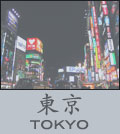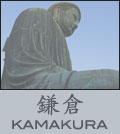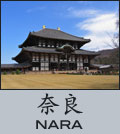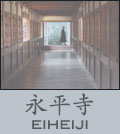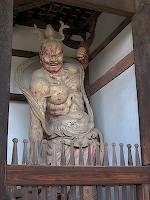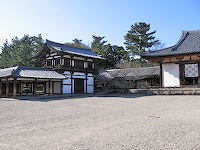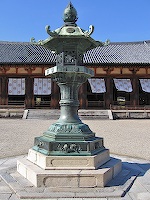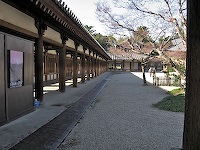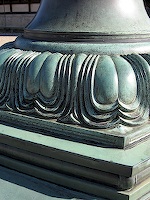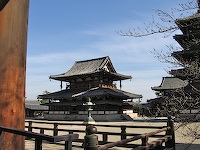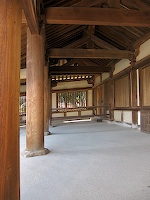Nara
Nara was the first capital of Japan, and has a long and rich history. It was in this region that members of the Yamato clan became Japan's original emperors, some 1700 years ago. It is also home to many important landmarks, including both the oldest and largest wooden structures in the world, one of the largest daibutsu (大仏 great Buddha) statues in Japan, and several museums full of ancient artifacts.
We took the Kintetsu train from Kyoto to Nara. Upon arrival, we grabbed a coffee and started walking towards Nara Koen (公園 park), famous for the hundreds of deer that roam freely within.
Todaiji
Our first stop was Todaiji, in the middle of Nara Koen. This temple (head of the Kegon Buddhist sect) was originally founded in the 8th century, during the Nara period. We passed through several impressive gates, and finally arrived at the Great Buddha Hall, which houses the largest daibutsu in Japan, standing about 15 meters tall. This giant building is the largest wooden structure in the world, and also contains many other beautiful statues and artifacts.
Kofukuji
Kofukuji was founded in 669 in Yamashina Suehara (now known as Kyoto), and was moved in 710 to its present site, at the entrance of Nara Koen. Most of its many buildings were destroyed in 1180, in the wars between the Heiki and Genji clans. Though much of it was subsequently rebuilt, most of its buildings were again destroyed by a great fire in 1717. All that remains of this once-expansive temple are a few halls and pagodas.
Nonetheless, this temple (along with seven other sites in Nara) was designated a UNESCO World Heritage site in 1998. Perhaps its most interesting attraction is the National Treasure Hall, which houses Buddhist statues and other artefacts, many of which I found truly amazing to gaze upon. I was particularly captivated by the large Buddha head sculpture, which — dating back to 685 — is the oldest item in the museum. Unfortunately, as with most museums, photography is not permitted inside, but the brochure they gave us had some photos in it; I took a picture of the Buddha head in the brochure (since my scanner is back in Canada). It's not the greatest quality, but at least you can see what it looks like.
Horyuji
Located in the outskirts of Nara, Horyuji was the first site in Japan to be declared a UNESCO World Heritage. It was founded in 607, and is the home of the oldest wooden structures in the world. It has been called a "unique storehouse of world Buddhist culture", and contains thousands of statues, sculptures, and other artefacts, including some 190 national treasures and important cultural properties.
We were getting pretty tired by this point in the day, but we managed to tour the entire temple compound and its many buildings. Though the sun was shining brightly and many of my photos didn't turn out well, I did manage to get a few good ones.

